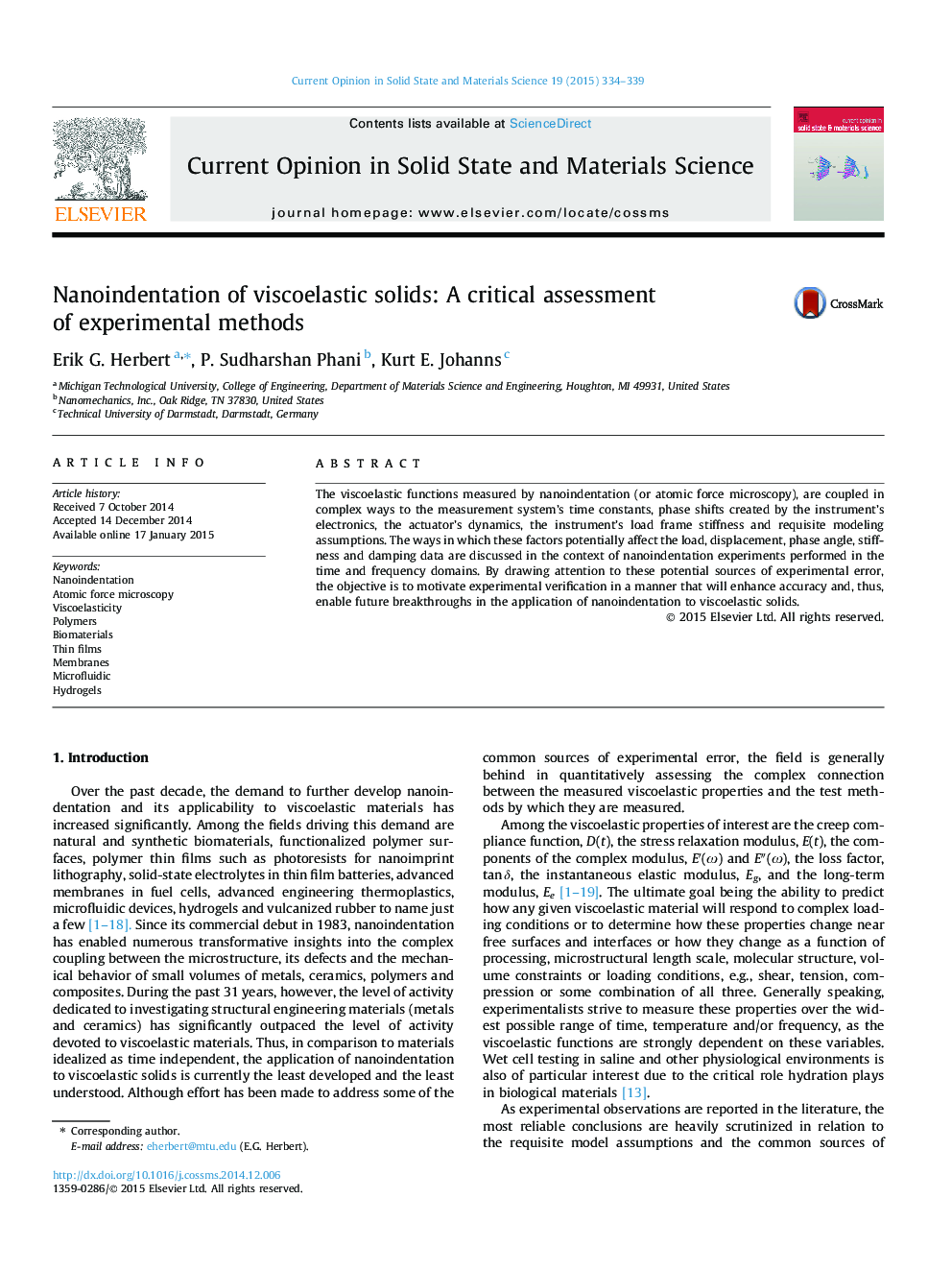| Article ID | Journal | Published Year | Pages | File Type |
|---|---|---|---|---|
| 1555500 | Current Opinion in Solid State and Materials Science | 2015 | 6 Pages |
•Nanoindentation of viscoelastic solids is not well developed.•The instrument’s basic outputs can be strongly dependent on how they’re measured.•Potential sources of error are coupled in complex ways to testing conditions.•Sensitivity of the basic outputs to critical test conditions is not well documented.•Strong collaborative efforts will be needed to develop reliable testing methods.
The viscoelastic functions measured by nanoindentation (or atomic force microscopy), are coupled in complex ways to the measurement system’s time constants, phase shifts created by the instrument’s electronics, the actuator’s dynamics, the instrument’s load frame stiffness and requisite modeling assumptions. The ways in which these factors potentially affect the load, displacement, phase angle, stiffness and damping data are discussed in the context of nanoindentation experiments performed in the time and frequency domains. By drawing attention to these potential sources of experimental error, the objective is to motivate experimental verification in a manner that will enhance accuracy and, thus, enable future breakthroughs in the application of nanoindentation to viscoelastic solids.
